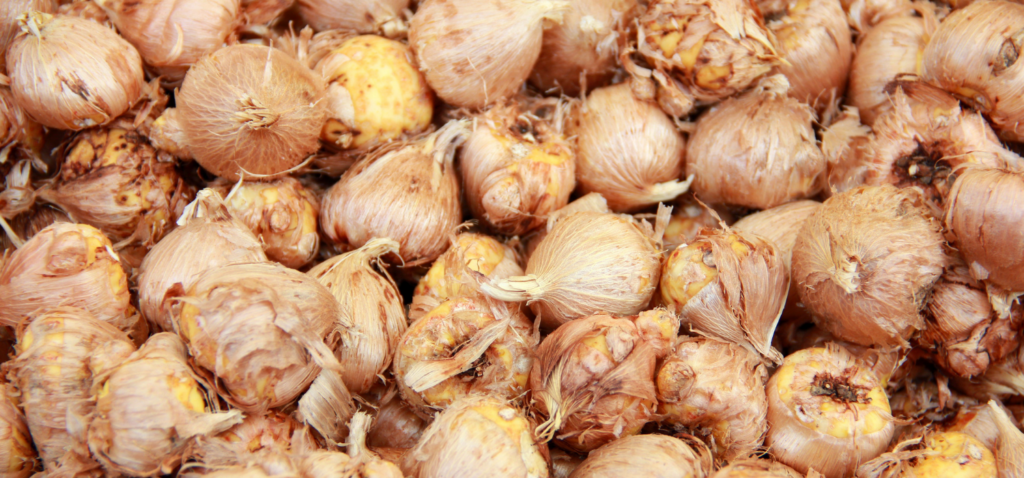Always plant bulbs in borders or beds with good drainage. Plant tulips 6″ deep, daffodils the height of 3 bulbs deep and Hyacinths should be planted 8-10″ deep.
Do Not use strong commercial fertilizer or fresh manure when planting. If your flowerbeds need nutrients, a well-balanced fertilizer such as 10-10-10 or something similar may be recommended. Bulbs do NOT necessarily need fertilizer, but they need nutrients if the soil is depleted from previous plantings.
Always cut as little foliage possible when removing dead blooms from your bulbous plants. The leaves are essential for storing food for next year. If you are cutting fresh bulbs to use in an indoor vase, then you want to cut as much stem as possible (all the way down to the base of the stem) while leaving the foliage.
Do Not let a bulb flower go to seed. Cut flowers as they fade and remove any seed pods that form. Leave the foliage to keep the bulb strong.
Always let the foliage die back on its own in the garden before trimming it back or digging up the bulbs. Do not trim back healthy green foliage or the bulb will not perform well next year.
Never dry bulbs in the sun, always in the shade in a well-ventilated area.
Always store bulbs in a dry, well-ventilated area to prevent mold or mildew. Do not store them in an air-tight container.
Do Not grow bulbs year after year in the same place. Sooner or later, they may be attacked with a fungus disease called fire blight, which affects both foliage and flowers. Either change the soil or the location; follow the principle of crop rotation.
Always label the bulbs as you plant them. Use labels that are big enough so that 2-3″ of the label is below soil level. Smaller bulbs can get heaved out of the soil during winter freezing and thawing. Labeling prevents you from accidentally digging up bulbs out of season. Do not rely on your memory alone. Labeling is much safer.



